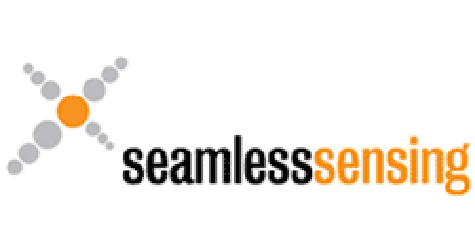Seamless Sensing is to unveil its breakthrough wireless energy monitoring and control solutions, enabled by EnOcean's energy harvesting technology, at Ecobuild in London today.
These new energy-autonomous wireless products have been developed for integration with smart grid networks and are the only such solutions designed specifically for homes in addition to other buildings.
In total, Seamless Sensing – a member of the EnOcean Alliance – will be launching seven unique Wireless Smart Sensing Modules at the show, including indoor solar powered temperature sensors, energy meter pulse monitors and a weather station that tracks the efficiency of renewable energy. All these technologies are designed to provide a fully wireless communication infrastructure between a person’s home or workplace and a purpose-built, cloud-based online portal.
Dr Edward Mellor, founder and chief executive of Seamless Sensing, said: “Our patent pending technology provides live information about a building’s energy use. The EnOcean Wireless Smart Sensing Modules can be easily connected to equipment, appliances and systems. The data each module collects is then transferred in real-time to a cloud-based platform, allowing people to monitor and set up automatic controls of the energy they use.”
The seven Seamless Sensing EnOcean Wireless Smart Sensing Modules being unveiled are:
1. Indoor solar powered temperature sensor – a self-powered, zero-maintenance sensor that tracks room temperature.
2. Weather station – provides key sensing information to monitor the efficiency of renewables. Being self-powered, with a compact and lightweight design, it is very easy to install and uses proven industry leading sensing technology.
3. Hot water and heat meter – meets the needs of heating, hot water, cooling and chilled water applications. The reading is used to understand the efficiency monitoring for solar thermal or conventional gas or electric heating systems.
4. CO2, temperature and humidity sensor – enables the monitoring and optimisation of comfort levels within buildings to gain higher efficiency of HVAC (Heating, Ventilation and Air Conditioning) units and lower energy costs.
5. Current clamp sensor – non-invasively measures the current in a cable. The device is simply clicked around a single line cable in a meter box or consumer unit. The device is self powered and requires zero maintenance.
6. Wireless appliance smart plug – measures energy consumption of connected appliances, such as kettles, and also supports on/off switching capability.
7. Energy meter pulse reader – a battery powered device that connects to an existing metering infrastructure to monitor electric, gas, water and oil supplies.
The Seamless Sensing GPRS gateway, which is independent of any IT infrastructure, can support hundreds of wireless sensor modules positioned throughout a building. The gateway provides a two way transfer of data and communication with the Seamless Sensing web-based platform – www.theenergyconsole.com – which users can access from any location using an Internet connection.
Dr Mellor concluded: “Through the online portal, people are able to see exactly where they are using energy – whether it be through a television, their heating or perhaps a washing machine. They can use it to control energy usage remotely. For example, a person could turn off their home heating or start their washing machine whilst still at work, or even whilst on holiday on the other side of the world!”
The control of home electronics through this new technology is enabled by the wireless appliance “smart plugs”, which are placed between the electrical outlet and the device or system being controlled. “Smart plugs” act in direct response to commands, such as on/off requests, from a smart grid through the smart meter which is controlled through the internet or the smart meter’s user-interface.
In addition to providing people with control over power usage, the energy management system forecasts energy demand based on the data collected, including previous energy consumption, local weather conditions and occupancy information. It also considers consumer based power generation such as solar or wind power and is capable of prioritising one or more devices so that energy consumption can be automatically changed to meet consumer defined energy cost or usage targets.
The wireless solutions from EnOcean draw power from their surroundings, for example from motion, light or temperature differences. This creates a fully energy-autonomous and maintenance-free solution. The energy produced in this way is sufficient to transmit a wireless signal, for instance, to turn on a light.
Use of the battery-less wireless technology not only saves installation costs, but also greatly simplifies any building cabling requirements as no wiring is needed at a later date, whilst allowing flexible room configuration.
The EnOcean Alliance can be found at stand S2433 at Ecobuild on 1 to 3 March 2011.










